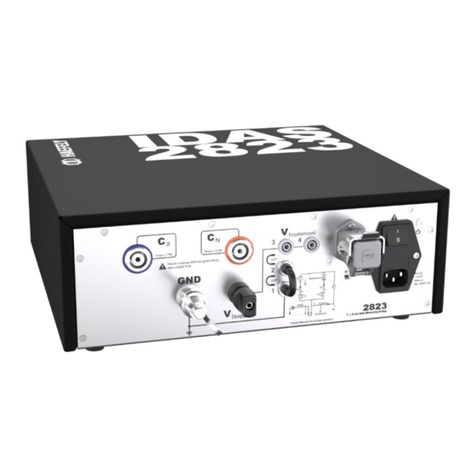7Device Operations 24
7.1 Touch Screen .................................................................................................... 24
7.2 Front Panel 2830............................................................................................... 25
7.3 Rear Panel 2830................................................................................................ 25
7.4 Front Panel 2831............................................................................................... 27
7.5 Rear Panel 2831................................................................................................ 28
8Assembling and Installation Guide 29
8.1 Mounting of 2830 and 2831............................................................................... 29
8.2 Inter-wiring of 2830 and 2831............................................................................ 29
9Software 30
9.1 General.............................................................................................................. 30
9.1.1 Start-up.................................................................................................. 30
9.1.2 Basic Window structure......................................................................... 32
9.1.3 Heater & Cell Status.............................................................................. 33
9.1.4 Basic Buttons......................................................................................... 37
9.1.5 Title Bar ................................................................................................. 39
9.1.6 Alarm Messages.................................................................................... 40
9.1.7 Error Messages ..................................................................................... 42
9.1.8 Informative Messages ........................................................................... 43
9.2 File Manager...................................................................................................... 44
9.2.1 File Selector Dialog ............................................................................... 45
9.2.2 Report.................................................................................................... 47
9.3 Setup ................................................................................................................. 48
9.3.1 DUT Info ................................................................................................ 49
9.3.2 Settings.................................................................................................. 51
9.3.3 Heating cell(s)........................................................................................ 53
9.3.4 Options .................................................................................................. 54
9.3.5 Auxiliary................................................................................................. 57
9.3.6 About Screen......................................................................................... 57
9.4 C tan δ ............................................................................................................... 58
9.4.1 Signal Analysis ...................................................................................... 63
9.5 DC Resistivity .................................................................................................... 66
9.5.1 Test cell shorting ................................................................................... 70
9.6 Sequence........................................................................................................... 72
9.6.1 Run a Sequence.................................................................................... 72
9.6.2 Run two sequences simultaneously...................................................... 77
9.6.3 Program a sequence............................................................................. 78





























